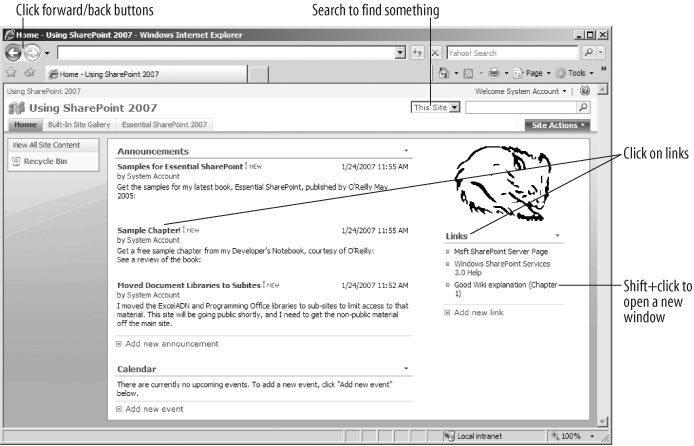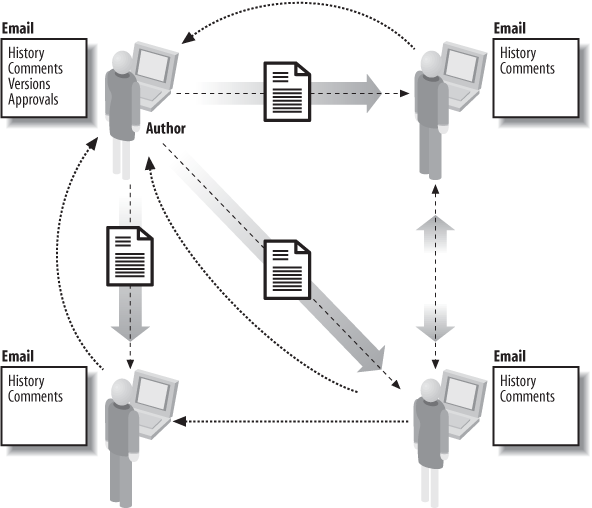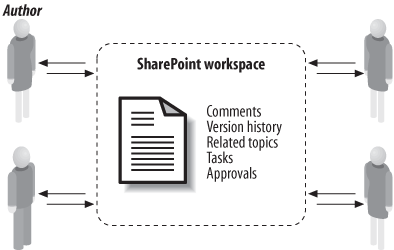SharePoint delivers office applications over the Web. An office application can be something as simple as a way to store and manage a library of documents within a small office, or as complex as a project management system used across continents.
In this chapter, I'll tell you how SharePoint saves you time (and money), and I'll walk you through creating three SharePoint applications that almost all businesses can use right away.
That was the question a clever woman asked me at one of the first training sessions I presented. I had to think a bit, but here's what I came up withâSharePoint helps you:
Find the information you need quickly
Link to that information to stay current
Share the information you have with others
Do all that through standard tools that folks already know
SharePoint does those things by creating a web site for your business that integrates with Microsoft Office applications: mainly, Word, Excel, and Outlook. From a user's perspective, it's just like using the Internet: click on links to go to a new page, search on a phrase to find something, and so on (see Figure 1-1). What's unique is the way that SharePoint integrates Office documents, task lists, calendars, email alerts, and other features in a way to simplify the flow of work through your business.
Instead of routing a document for approval via email, you post the document to SharePoint and collaborate with the reviewers interactively. Because the file is stored in a central location, everyone can see changes as they are made without resending the document each time it is changed; reviewers can discuss changes online, read one another's comments, and assign tasks and deadlines, and all changes are recorded in version history.
Document review is a simple but important example. Figure 1-2 and Figure 1-3 illustrate the differences between SharePoint and email solutions to a document review workflow.
The biggest difference between Figure 1-2 and Figure 1-3 is visibility. In the email workflow, reviewers don't see each other's comments or changes because those are stored away in each person's email. With SharePoint, comments and versions can be viewed by all reviewers. Additionally, you can include links to related topics, track tasks, and collect approvals in a structured way.
SharePoint is a big improvement over email solutions, but it comes with two conditions:
SharePoint affects work processes, so you need to think about how you will use it before it can help. You need to be able to describe the steps in a work process and assign responsibilities to specific users.
SharePoint is closely tied to Microsoft Office 2003 or 2007; you can use earlier Office versions or non-Microsoft applications, but you get the most benefit from the 2003 or 2007 Microsoft Office suites.
If you can live with those two conditions, then we can get started. Otherwise, you should probably consider other options.
Tip
For a list of SharePoint features supported by all Microsoft Office versions, see Appendix B.
Get Essential SharePoint 2007, 2nd Edition now with the O’Reilly learning platform.
O’Reilly members experience books, live events, courses curated by job role, and more from O’Reilly and nearly 200 top publishers.




